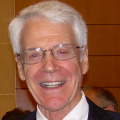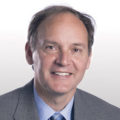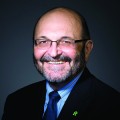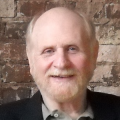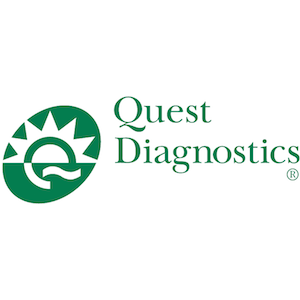2014
Embracing the Reptile Within: Head, Heart, & Healthcare
The 2014 symposium focused on emerging knowledge in science and medicine, and on how the brain’s capacity and limitations affect the progress for improving healthcare. Once again, the symposium illustrated, through presentations and dialogue, the importance of making the hard science completely understandable to the audience. Discussions of the intellectual, scientific, economic, and social aspects of healthcare were stimulated by agent provocateurs who challenged participants with interludes of deep thought about how we learn and act.
-
Big Health Issues
-
The Bugs are Winning in our Changing Global Health Landscape
The conjunction of emerging infectious diseases, the rapid rise of resistance to antibiotic and antiviral drugs, and the sluggish pipeline for new anti-infectives puts us at the eye of a perfect storm. This talk will explore the environmental and societal challenges that are responsible for the global surge of novel pathogens as well as old pathogens in new places. How...
-
Bottlenecks in Evolution, Bottlenecks in Type 2 Diabetes
We are in the midst of an unprecedented epidemic of obesity, which is accompanied by a type 2 diabetes epidemic. Whereas >80% of people with type 2 diabetes are obese, ~80% of obese people do not develop diabetes. My laboratory studies this dichotomy by searching for genes that confer susceptibility to type 2 diabetes. This involves genetic screens in obese...
-
Pursuing the Placebo Effect
This talk will emphasize clinical research into placebo effects and discuss several experiments that Ted Kaptchuk has led. The talk will present studies that suggest that the ritual of therapy can be administered in a manner analogous to dose dependence (BMJ 2008), that placebo outcomes may not be dependent on deception or concealment (PloS One 2010), that placebo responses may...
-
What Can Galapagos Teach Us About Innovation?
Off the coast of the islands of Galapagos, new life and new species are created there at a remarkable pace. It is Nature’s platform for innovation. Where is its analog in the man-made world? What are the catalytic conditions that make disruptive innovation happen? We will use the metaphor of nature to propose a framework for innovation.
We...
-
-
The Head
-
From the Autistic Brain to the Autistic Mind and Beyond
Autism is a complex developmental spectrum disorder currently estimated to affect as many as 1 in 100 children, and is 4 times more prevalent in males than in females. It is defined by a constellation of behavioral symptoms that include limited social interactions and profound language disabilities. However, the underlying neural causes for these severe disabilities are only recently beginning...
-
A Conserved Regulatory Core — With Species-specific Innovations — at the Root of Shared Behaviors
Certain aspects of early development — including most types of cell-fate decisions and many aspects of determination of the body plan — proceed similarly in all metazoan organisms. Despite the wide diversity of eventual outcomes — specialized adult cell types, organs, body morphs and behaviors — these fundamental steps are also controlled by very similar cohorts of genes. In particular,...
-
Closed-loop Healthcare Processing: The Use of Proteomics and Information Technology to Improve Healthcare
Clinical care decision-making can be improved though the use of a “closed-loop” information processing cycle that integrates sensed and recorded data on individuals (initially centered around a combination of highly-multiplexed, longitudinal protein measurements, and electronic healthcare records). This approach applies, analyzes, and visualizes those data using “causality cases” (authoritative findings about how sensed data relate to diagnosis), so as to...
-
The Stupid Ways That We Have Thought About Intelligence
What does it mean to be smart and why is it so hard? Could we imagine a world where being smart was easy and being dumb was difficult? Why do we think that someone is intelligent because they can solve a chess problem effortlessly (an easy task for a computer), but think less of someone who can effortlessly throw a...
-
-
The Heart
-
High Levels of Growth Differentiation Factor 11 Are Associated With Lower Prevalence of Left Ventricular Hypertrophy, Heart Failure and Mortality
Blood levels of growth differentiation factor 11 (GDF11) decline in mice with age, accompanied by development of cardiac hypertrophy. Treatment of old mice to restore GDF11 to youthful levels regresses cardiac hypertrophy (Cell 2013: 153, 828–839). Thus, GDF-11 is a potential therapeutic target for preventing or reversing left ventricular hypertrophy (LVH), but no data are available on GDF-11 in humans....
-
Becoming Heart Attack Proof and Ending the Coronary Artery Disease Epidemic
At the completion of this talk the participants will appreciate the scope of the coronary artery epidemic and why it does not exist in certain cultures. They will have further insight into the mechanism of plaque blockage formation and an understanding of why plaque ruptures and how a heart attack develops. They will have an understanding of what is our...
-
The American Research University: Achievements, Challenges, and Responses
The output of research universities has been a source of American economic leadership since the Second World War, but today American leadership is threatened by (1) declining and volatile Federal government support for research, and (2) dramatically declining state government support for education in our public universities. This talk provides data illustrating that economic growth depends on technology derived principally...
-
Aphrodite and Medusa: Portraying the Beauty of Biology and the Gorgon of Disease
How many dimensions are there to Aphrodite or Medusa? Can you describe them in one word or even a short list? Would you even try to do so, when the process of appreciating their complexity is such a positive experience? And if you were blessed with the skills to represent them artistically, would you leave out the bits that the...
-
-
Action
-
Giving the Patient a Choice: Democratizing Medical Service
With the expansion of healthcare that is attendant on the passage of the Affordable Care Act and the aging of the population generally as the baby boomers hit 65 at the rate of 10,000 per day, there will be a premium on providing high quality, readily accessible, affordable healthcare. This presentation will look at the emergence of highly effective healthcare...
-
Designing for Patient Centered Care When There Is No Cure
Palliative Care medicine was not a field or a specialty in the 1980s. Advocates of such end of life care, often inspired by the then emerging hospice movement, struggled to bring palliative care into hospitals and cancer clinics. Their efforts frequently faced reluctance, even resistance, from medical professionals who lived in a culture of treatment and cure. This clash of...
-
Logic, Science, Death, and Trolley Safety
Tom Cathcart will explore the intriguing connections between 1) logic, 2) science, 3) death, and 4) trolley safety, while demonstrating how to monetize a 1961 bachelor’s degree in philosophy in today’s global economy.
-
Changing Minds: You Don’t Know the Half of It
From inside our own consciousness, it seems to us that our thinking and behavior follow a somewhat linear progression in which we perceive the world around us, gather information, interpret what we perceive, decide, and act. From this perspective it’s possible to believe that if we all had access to the same information (and understood it) we’d all reach the...
-
Changing Minds: You Don’t Know the Half of It
From inside our own consciousness, it seems to us that our thinking and behavior follow a somewhat linear progression in which we perceive the world around us, gather information, interpret what we perceive, decide, and act. From this perspective it’s possible to believe that if we all had access to the same information (and understood it) we’d all reach the...
-
-
-
Closing Remarks 2014
Dr. Larry Gold is the Founder and Chairman Emeritus of the Board, and former CEO of SomaLogic. Prior to SomaLogic, he also founded and was the Chairman of NeXagen, Inc., which later became NeXstar Pharmaceuticals, Inc. In 1999, NeXstar merged with Gilead Sciences, Inc. to form a global organization committed to the discovery, development and commercialization of novel products that treat infectious diseases.
-














